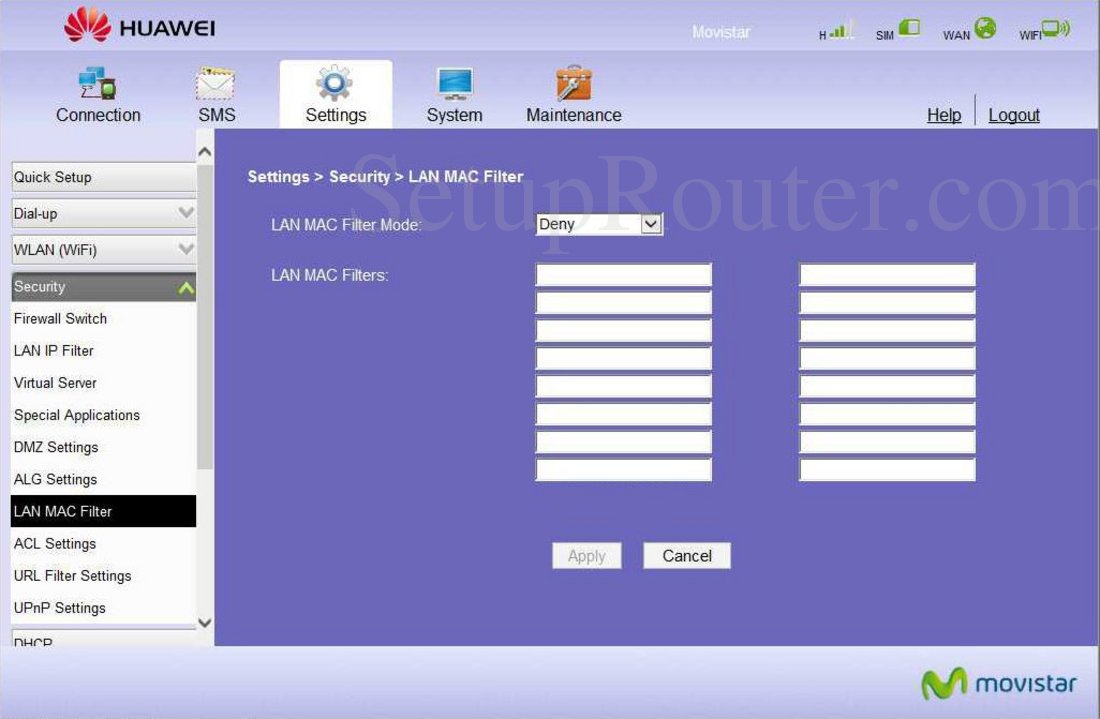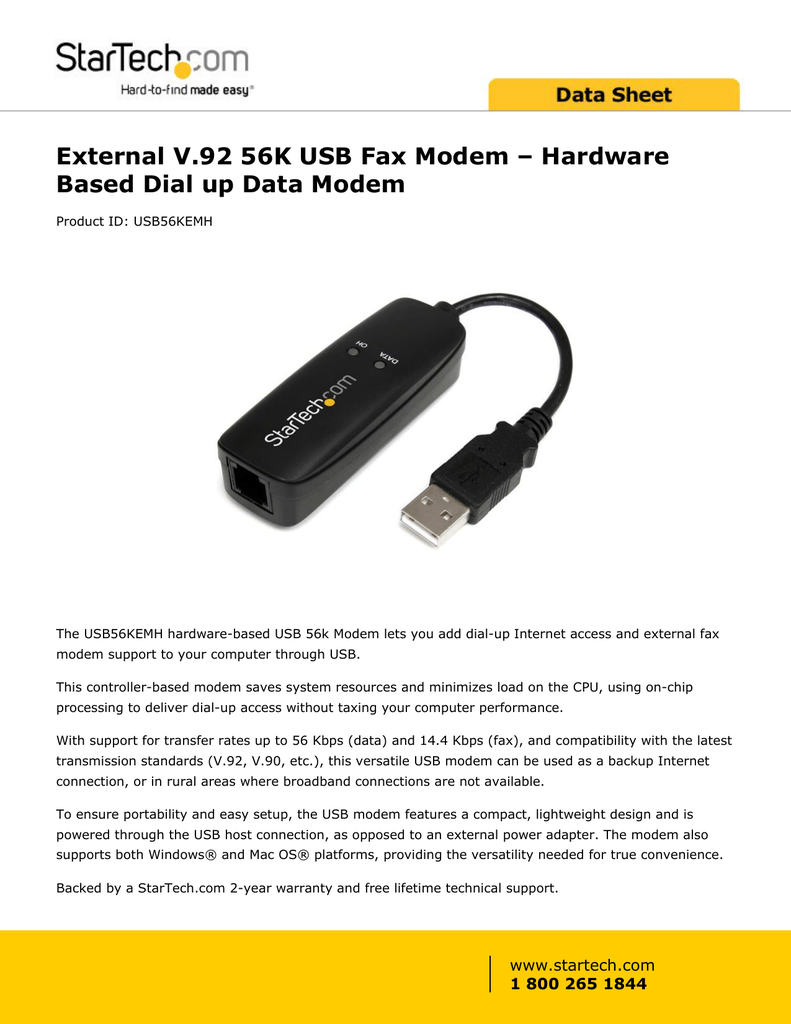Dial Up Modem For Mac
On your Mac, choose Apple menu System Preferences, then click Network. Open Network preferences for me. Select your modem in the list at the left. If your modem is not in the list, make sure your modem is connected to your computer (internally or externally), click the Add button at the bottom of the list, click the Interface pop-up menu, then choose Modem.
- Set up a dial-up modem to connect automatically on Mac. Set up your modem to connect to the internet automatically when you use an app that requires a connection, such as Safari or Mail. After your modem is set up, whenever you open an app that requires a connection to the internet, the modem.
- Troubleshoot dial-up modem problems on Mac If your dial-up modem connects automatically If the option to connect automatically is selected in the PPP pane of Network preferences, your computer connects to the internet every time you open an app or use a service that uses TCP/IP.
- V.TOP External V.92 56K Dial Up USB Fax Modem with RJ11 Cable – Analog Modem Fax to Receive/Send Fax via Fax Machine Compatible for Windows xp / 7/8& Mac OS 10.9 to 10.10 3.9 out of 5.
| Developer | Apple Inc. |
|---|---|
| Type | USB modem |
| Release date | October 12, 2005 |
| Introductory price | US$49 |
| Discontinued | September 2009 |
| Website | support.apple.com/kb/HT3152 |
The Apple USB Modem is a combined 56 kbit/s data modem and 14.4 kbit/s fax external USBmodem introduced by Apple Inc. after the internal 56k modem was dropped on the October 12, 2005 iMac G5 revision. While it looks similar, it should not be confused with Apple's optional USB Ethernet Adapter accessory, available for its MacBook Air and MacBook Pro Retina range of laptops since 2008.

History[edit]

Apple introduced its first true modems in 1984, the Apple Modem 300 & 1200 modems (V21/V22). Prior to that they offered a third party Apple-badged comparatively low-tech acoustic coupler. Those were followed by the industry standard 2400/data and combined 9600/fax (V29) AppleFax Modem in 1987. Apple introduced the internal 2400 data/fax modem card for its Macintosh Portable in 1989 as well as released its last external desktop Apple Data Modem 2400. Only standard internal modems were offered during the 1990s through 2005, with the notable exception of Apple's foray into GeoPort passive telephony modems which relied heavily upon the computer's software and processing power rather than dedicated hardware (like Apple's proprietary internal Express Modem). The Apple USB Modem is Apple's first true external modem since the Apple Data Modem 2400 was discontinued in 1992.
As of September 2009 it is no longer available in the US Apple Store, but it still works (at least for fax) as of Mac OS X version 10.6.2. No officially supported 64-bit driver exists, and as Mac OS X Lion operates by default in 64-bit mode, the USB modem will not function in Lion without workarounds.[1]
Features[edit]
The Apple USB Modem supports V.92, Caller ID, wake-on-ring, telephone answering (V.253), and modem on hold. The modem is manufactured by Motorola. A device driver for the modem was introduced with Mac OS X version 10.4.3.
It retailed for US$49 at the time of its introduction.
Apart from using the Apple USB Modem for Internet dial-up and faxing, it is also being suggested as a low cost line interface (aka FXO interface) for telephony applications, such as for telephone systems (software PBX) and answering machine software.
The decision to drop the built-in dial-up modem is reminiscent of Apple's decision to drop built-in floppy drives. With the rise of broadband Internet and the general availability of wireless networking, it is likely that Apple felt that it was of more use for people to have broadband using an ethernet cable or a wireless system instead of dial-up.

The highly miniaturized product, about the size of a cigarette lighter and with a 4.6-inch long USB cable, won a RED DOT design award for good design.[2]
References[edit]
- ^David W. Martin (August 15, 2011). 'Mac OS X Lion Says Good-Bye To Analog Communications [Modems]'. Cult of Mac. Cult of Mac. Retrieved August 16, 2011.
- ^red dot award: product design 2006Archived February 13, 2009, at the Wayback Machine. Retrieved on January 7, 2009.
So I have this 4G+/LTE modem - Huawei E3372, also known as Megafon M150-2 - which is exactly the variation I got.
Eventually I got sick of its connection management software for Mac OS (the one that comes from Megafon), so I started looking for a way to be able to connect to the internet on Mac OS without it.
The modem itself is rather a great piece of hardware.
Coming in a form-factor of a USB-stick, it is capable of maintaining quite a high-speed internet connection, and apparently it supports all the international LTE standards because I was using it in several countries without problems.
On top of that it has slots for external antennas and even a slot for microSD card (don’t know what to do with it):
Note that it requires full-sized SIM-cards.
I bought it several years ago in Moscow at some Megafon selling point. Back then it cost me just ~700 RUB (10-20 USD?). The reason for such a low price is usually that modems are locked to a particular operator, but in my case surprisingly that wasn’t the case.
Modem Dial Up Software
If memory serves me well, I did not perform any unlocking operations, and it just works fine with SIM-cards from other operators than Megafon. I must say, however, I never tried it with any other russian operators - the only SIM-cards I was using it with were the ones from norwegian operators (Telia and Phonero).
And it is available for purchase even today:
- from the very same Megafon, although it is likely to be a locked version (which can be unlocked);
- an unlocked version on Amazon.
But what is wrong with the Megafon software? Well, while it does its job, after some time it started to irritate me for the following reasons:
- It installs god knows what to your system, while the only thing you really need is just a modem driver;
- In addition to the main application it requires its service to run in the background, otherwise it won’t even start discovering the modem;
- It sends some data to different Megafon hosts. I would understand if it was for checking the updates, but why different hosts then? I don’t feel like having yet another spyware in my system;
- File Activity tool from Instruments shows some enormous files access by the application and/or service. What could be the purpose of such an activity, I wonder?
So I started looking for a way to avoid using the Megafon software.

The first clue was the fact that the modem works just fine with routers:
Modem For Dial Up Connection
There is no need to install any Megafon software on the router for it to be able to connect to the internet via the modem, is there? So why the need in such a software on Mac OS?
After some research I got the following steps (mostly from this great topic at 4PDA and also this SuperUser answer):
- Install the driver for Mac OS for the initial modem discovery;
- Put the modem into a mode in which it will be discovered by Mac OS as a dial-up modem;
- Add a new network service using the modem.
Driver for Mac OS
Maybe it’s just me, but I’ve spent quite a some time looking for a driver. Surely, I could use the one installed together with the Megafon software, but there is no way to install only the driver, and I wanted to have a “clean” set-up procedure.
Most of links I found on the internet were dead. Of course I tried looking at the official Huawei’s website, but didn’t succeed there either.
But then in a comment section at some blog I did find a link to the working driver. And it was hosted on the official Huawei’s website! I don’t know how does one find it on his own, but here’s the link.
You don’t have to install everything, the only thing you need from this package is the driver (MobileConnectDriver.pkg):
Modem Dial Up
I will be hosting a copy just in case the official link dies like the rest at some point. Note that this is a driver for Mac OS Mojave, scroll to bottom for the Catalina version.
After the installation you should get the following thing installed:
Check if the modem is discovered in the system:
Switching to dial-up mode
I’m sure that it’s called something else and not the “dial-up mode”, but I haven’t found the correct name for it.
So, you’ve got your modem discovered by the system. Connect to it via screen:
And try to communicate with it using AT-commands. First I tried to collect some information about the device (first line in each group is the command, the following lines are the response):
Okay, and here’s the command to switch the modem into dial-up mode:
Connecting to the internet on Mac OS
The only thing left is to create a new network service in Mac OS.
Create a new service using HUAWEIMobile- interface:
Set the good old mobile dial number *99#:
And you’re connected to the internet without any additional software, using only the native Mac OS tools:
As it was pointed out in comments, the driver stopped working on Mac OS Catalina. Most likely this is because it was x32, and Catalina requires x64, so an x64 version of driver is required. That actually was one of the reasons why I haven’t upgraded to Catalina.
Fortunatelly, such version exists, and apparently has been available since at least 30.10.2019. An awesome chap shared a link on 4PDA forum. I’ll host a copy here too.
I’ve tested it on Catalina, and it works fine.
